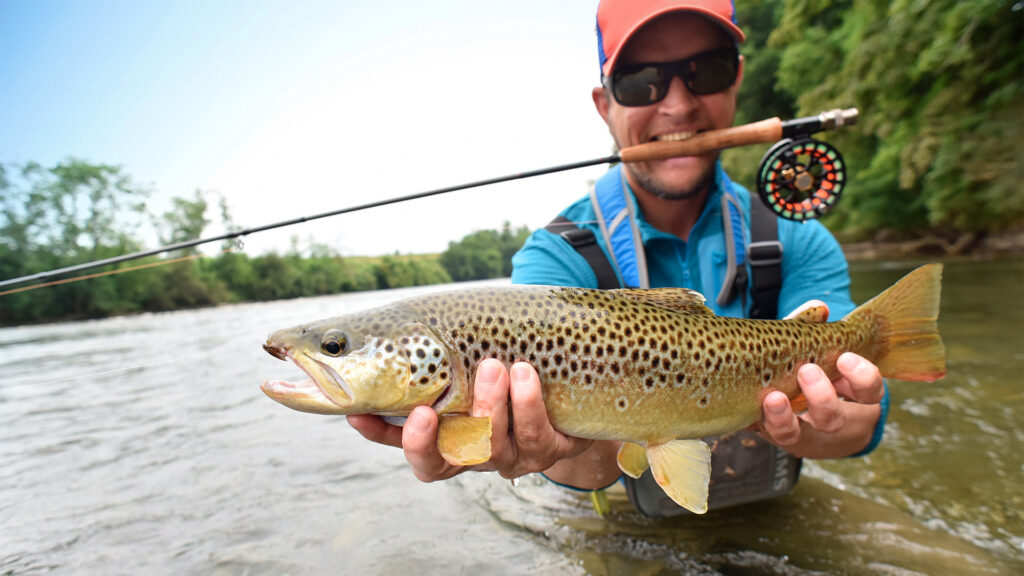Hunkered beneath that sunlit sheen of water, they wait. Legendary big fish. Lunkers troll rivers and lakes with their cool, plated bodies. Lifting their eerie doll eyes to the surface, they feel sound and see shadow when something ripples through the moving ceiling of their world. With weird fish logic, they calculate: whether to take the bait—or not.
This contest between man and fish is a little bit of chess. A little bit of luck. And a whole lot of fun. It can also be a high-stakes game of honor—especially when you take the RV across the country with a specific fish in mind. The northern states are choice territory for angler ambitions. Here, the reward is great, because very little is as satisfying as pulling a slapping giant into the naked air.
That should be motivation enough to pack your tackle into the camper and make the journey. So, if you’re fishing for the right spot, here’s an inside scoop on where to find the giants and how to drag them from their damp domain.
Trophy-Sized Trout
Brown Trout | Bighorn River, MT
Angle of Attack: Fly Fishing
Tackle Box: Dry (dark, sizes 16-22), streamer, and wet flies to simulate local prey
Might be a lunker if...It’s over 10 pounds and/or 27 inches
Local Limit: 5 daily and in possession (for the river)
Fishing brown trout on the Bighorn River is an adventure of a lifetime. And reeling in a beautiful brown is the memory you want. Quality fly fishing is available year-round. Brown trout are aggressive and opportunistic feeders, so you’ll have an opportunity to use a wide variety of flies. In mid-June, the hatch of pale morning dun (PMD) mayflies also works to your advantage.
Camp nearby at the Grandview Campground & RV Park in Hardin, Montana.
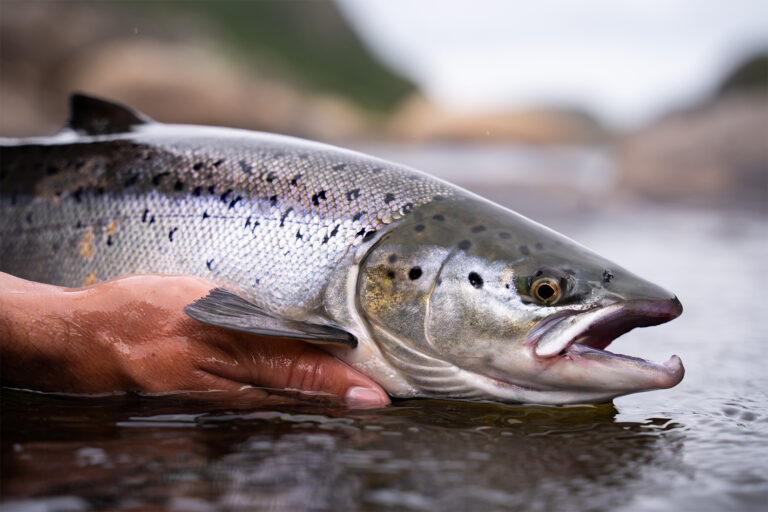
Scale-Tipping Salmon
Chinook Salmon | Lake Oahe, SD
Angle of Attack: Back trolling with plugs
Tackle Box: Fish plug, with sardine or herring as wrapped bait
Might be a lunker if...It’s over 20 pounds and/or 36 inches
Local Limit: 5 daily, 10 in possession
The Chinook is the King of all salmon reaching sizes up to 1.5 meters. (That would certainly qualify as a lunker.) Their kingdom lies in the cool depths of Lake Oahe and its tailwaters, where they feed on lake herring and rainbow smelt. So, to attract their attention in the lake, you’ll need to troll some depth.
Camp nearby at the D & S Campground Lodge & Storage in Akaska, South Dakota.
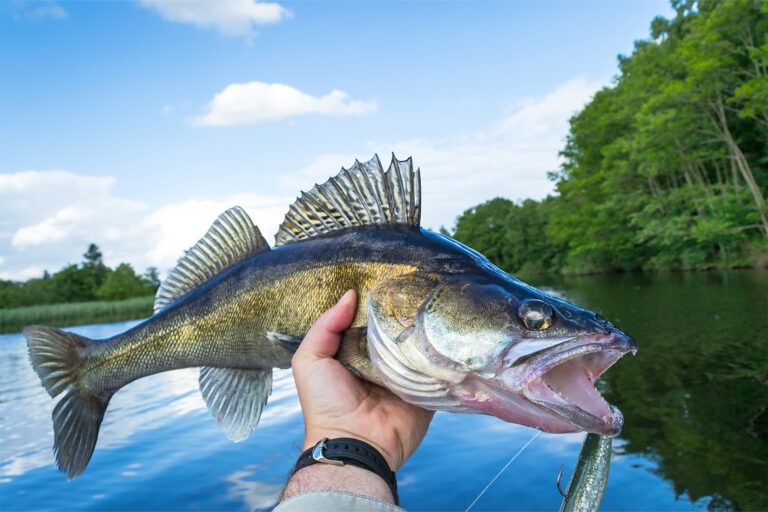
Walleyed Wonders
Walleye | Duluth, MN
Angle of Attack: Jigging with live bait
Tackle Box: 1/8 oz. Fire-ball style jigs + shiners, 4–6 inches
Might be a lunker if... It’s over 8 pounds and/or 28 inches
Local Limit: 6 total (not more than one walleye over 20 inches)
Mid-May through mid-June is prime time for walleye on Lake Superior. After spawning on the St. Louis River, they move into the lake—with young fish arriving first and bigger females following after. These fish have some sharp teeth, which gives you a hint about their love for live bait. It also gives you a hint about their aggressive nature. These guys will fight you, so buck up your resolve.
Camp nearby at Wild State Cider (a Harvest Host) in Duluth, Minnesota.
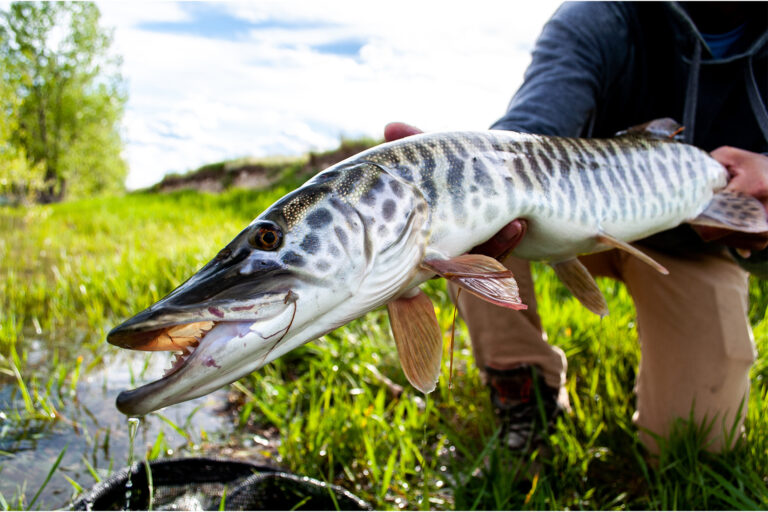
Monster Muskies
Muskellunge | Green Bay, WI
Angle of Attack: Trolling in a figure 8 at 10–15 feet
Tackle Box: #5 Bucktails and soft plastics
Might be a lunker if...It's over 26 pounds and/or 46 inches
Local Limit: 1 daily and in possession
Sure. Landing any mature muskie feels like a lunker. These are big fish, with some reaching sizes up to 6 feet and nearly 70 pounds. Despite their size, start with smaller bait in the spring. With colder waters, they’re more sluggish and likely to take easy bait. Although muskies love the shallows, in this season, target drop offs instead. Keep working the lure to draw them in.
Camp nearby at Bay Shore Campground in Green Bay, Wisconsin.
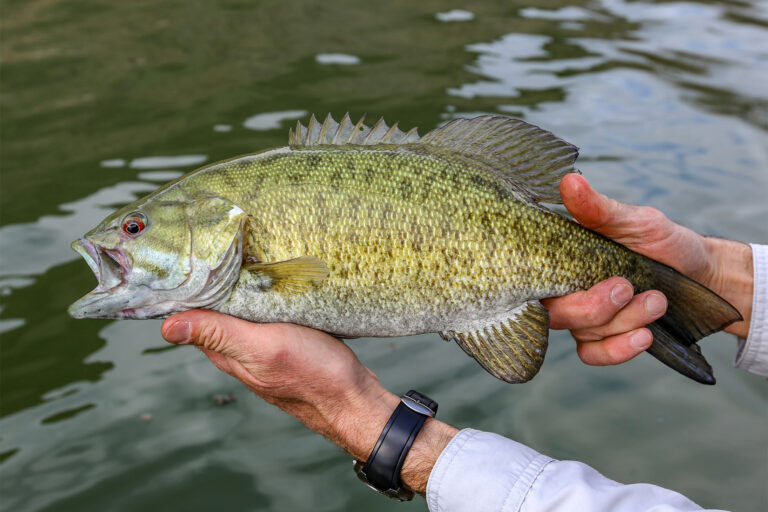
Not-So-Smallmouths
Smallmouth Bass | Saint. Lawrence River, NY
Angle of Attack: Dropshot
Tackle Box: Tube jigs, soft plastics (worm, stick bait, minnow)
Might be a lunker if... It’s over 5 pounds and/or 20 inches
Local Limit: Catch and release only
Angling in the St. Lawrence River is a bucket list experience for any fisherman—even with the catch-and-release requirement for smallies. Active in the late spring, bronzebacks love the cool waters more than their larger-mouthed cousins. Up north, you can expect some aggressive hits on dropshots if your presentation has some finesse.
Camp nearby at Waterson Point State Park in Fineview, New York.
Disclaimer: Fishing regulations are updated annually—in great length and extensive detail—by states, the extent of which we are not able to represent here. Check the full guidelines for fishing in each state before you travel to ensure that you are in compliance with local regulations.
Share Your Catch
We don’t care if it was our sage advice, your novel tactics, or a stroke of sheer luck. Point is, we wanna see your fish! Share on Facebook or Instagram @IHeartRVing.

